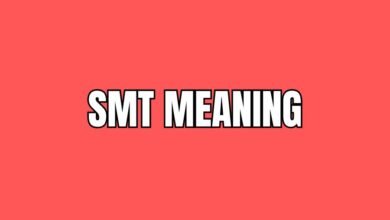How to Fight: The Ultimate Guide to Winning Any Battle

Fighting is not just about throwing punches—it’s about skill, control, and strategy. Whether you’re defending yourself or competing in a sport, knowing how to fight properly can give you confidence and keep you safe.
This guide will teach you everything you need to know about fighting, from mindset to techniques. It is simple, easy to understand, and packed with practical tips. Let’s get started!
Understanding the Basics of Fighting
Before you start learning techniques, you must understand the fundamentals of fighting. These basics will help you stay balanced, move efficiently, and strike effectively.
Develop the Right Mindset
Your mindset is your most powerful weapon. A strong mind can help you stay calm and focused during a fight.
- Commit to the fight – If you hesitate, you give your opponent an advantage. Be confident and stay determined.
- Stay relaxed – Tension slows you down. The more relaxed you are, the faster and smoother your movements will be.
- Expect to get hit – No fighter can avoid every strike. Accept that you might get hit and focus on your game plan.
- Stay in control – Anger and fear will make you reckless. Stay calm and think before you move.
Build a Strong Fighting Stance
A good stance helps you stay balanced and ready to attack or defend.
- Keep your feet shoulder-width apart – This gives you stability and allows quick movements.
- Bend your knees slightly – A low stance helps you react faster.
- Keep your hands up – Always protect your face and body.
- Tuck in your chin – This protects you from strong punches.
- Stay on the balls of your feet – This allows you to move quickly and avoid attacks.
Mastering Basic Fighting Techniques
Once you have a strong foundation, you can learn essential fighting techniques.
How to Throw a Powerful Punch
A strong punch is not just about arm strength—it’s about using your whole body.
- Turn your hips – Power comes from the hips, not just the arm.
- Aim with your knuckles – This makes your punches more effective.
- Snap your punches – A fast, explosive punch does more damage than a slow, heavy punch.
- Breathe out sharply – This increases power and prevents you from tiring quickly.
Effective Kicking Techniques
Kicks can be powerful weapons if used correctly. Here are some key tips:
- Use your shin, not your foot – Kicking with the shin is stronger and safer.
- Rotate your hips – This adds power to your kick.
- Keep your guard up – Don’t drop your hands when kicking, or you’ll be open to counterattacks.
- Recover quickly – After a kick, return to your stance fast to avoid being hit.
Defending Yourself in a Fight
Defense is just as important as offense. Here’s how to protect yourself:
- Keep your hands up – Your hands should always be in front of your face.
- Move your head – A moving target is harder to hit.
- Block with your arms – Use your forearms to stop punches and kicks.
- Use footwork – Stay light on your feet and move around your opponent.
Advanced Fighting Strategies
Now that you understand the basics, let’s explore more advanced techniques.
Reading Your Opponent
A smart fighter watches and studies their opponent. Look for:
- Patterns – Does your opponent always throw the same punch first?
- Weak spots – Do they drop their guard or slow down when tired?
- Footwork – Are they fast or slow? Do they move forward aggressively or wait for you to attack?
Controlling the Fight
To control a fight, you need to dictate the pace and positioning.
- Stay in the center – Controlling the center forces your opponent to move around you.
- Push the pace – If your opponent is slow, be aggressive. If they are aggressive, make them chase you.
- Use angles – Don’t just move forward and backward. Move sideways to create openings.
Using Feints and Tricks
Feinting means pretending to attack to make your opponent react.
- Fake a punch to the head, then hit the body – Opponents often drop their guard when they expect a headshot.
- Move one way, then attack the other – This confuses your opponent and creates openings.
- Pretend to be tired – If your opponent thinks you’re weak, they may attack carelessly.
Conditioning Your Body for Fighting
A strong, well-conditioned body is key to fighting success.
H2: Strength and Endurance Training
- Do push-ups, squats, and core exercises – These build strength.
- Jump rope – This improves footwork and endurance.
- Shadowbox – This helps you practice movements without a partner.
H2: Flexibility and Speed
- Stretch daily – Flexible muscles move faster and are less likely to get injured.
- Practice explosive movements – Sprinting and fast drills improve speed.
What to Do If You Get in a Real Fight
Sometimes, fights happen unexpectedly. Here’s how to handle them.
Stay Calm and Assess the Situation
- Avoid fighting if possible – Fighting should always be a last resort.
- Look for an exit – If you can walk away safely, do it.
- Watch your surroundings – Be aware of obstacles, weapons, or multiple opponents.
Defend Yourself Effectively
- Stay balanced – Don’t rush in or lose your footing.
- Use quick, controlled strikes – Don’t waste energy throwing wild punches.
- Protect yourself at all times – Keep your hands up and watch your opponent.
Conclusion
Fighting is about more than just throwing punches. It requires skill, strategy, and control. By learning the right techniques, staying in shape, and keeping a strong mindset, you can become a better fighter.
Remember, the best fighters are the ones who avoid unnecessary fights. Train smart, stay calm, and always be prepared.
FAQs
Q: What is the most important thing in a fight?
A: Staying calm and keeping your hands up to protect yourself.
Q: How can I punch harder?
A: Use your whole body, especially your hips, and snap your punches.
Q: How do I avoid getting hit in a fight?
A: Keep moving, use head movement, and block with your arms.
Q: What should I do if my opponent is bigger than me?
A: Stay quick, use angles, and aim for weak spots like the ribs or chin.
Q: How can I improve my fighting skills?
A: Train regularly, practice footwork, and spar with different opponents.




